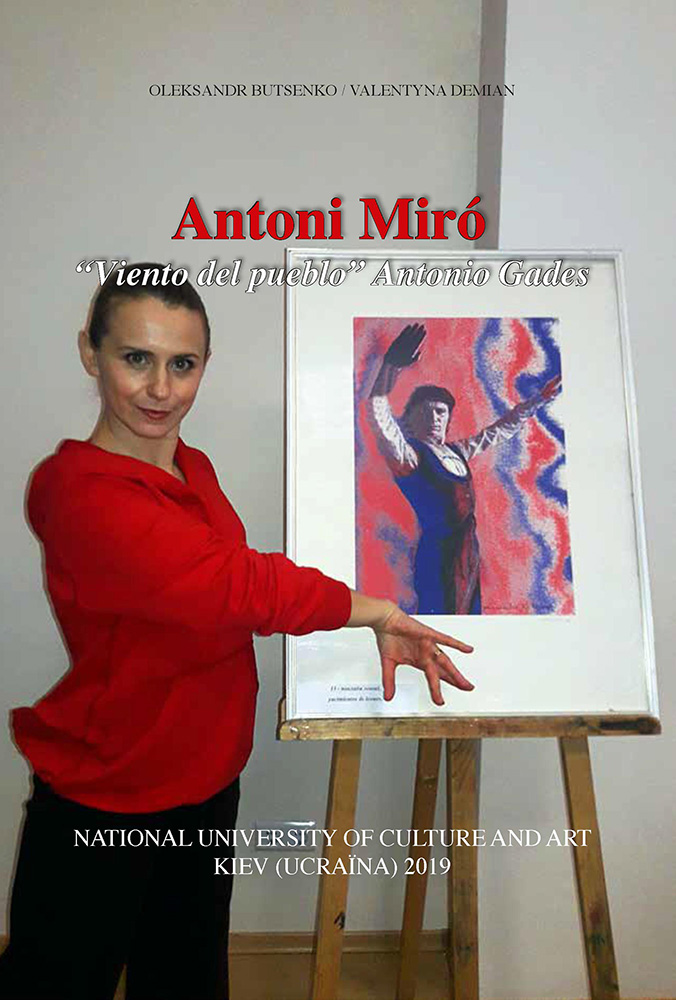Inexhaustible source of inspiration
Valentyna Demian
The ABC, one of the main Spanish newspapers, on informing in November 2010 that the UNESCO Intergovernmental Committee for the Safeguarding Intangible Cultural Heritage at its Fifth Session, in Nairobi, Kenya, had approved the decision for inscription the art of flamenco on the Representative List of the Intangible Cultural Heritage of Humanity, published the photo of Antonio Gades raising his hands in rousing dance. As it is said in the nomination dossier, flamenco as an artistic expression is the product of the fusion of song (cante), dance and musicianship. “Flamenco baile is a dance of passion, of courtship, and a wide range of situations expressing individual sadness and joy”1. Though Antonio Gades had died in 2004 after long illness, just his image became a symbol of Spanish flamenco which received world-wide recognition. Such image was not chosen by accident. The first director of new National Ballet of Spain (1978), founder of the Ballet Antonio Gades, the talented dancer could raise the art of flamenco to incredible level, get- ting fans in all over the world. It resulted, as well due to the merge of different types of art, dance and cinema. The films of the outstanding director, Carlos Saura, Bodas de Sangre, Carmen, El amor brujo, with participation of A. Gades, not only got international rewards but as if opened new dimension for flamenco, the dimension of screen time and space.
Such creative trend was continued after the death of the famous dancer as well. A brilliant example is the graphic series “Wind of people” by the well-known Catalan artist Antoni Miró. This fusion of poetry (M. Hernández), dance (A. Gades) and fine art (A. Miró) looks like opening one more dimension for flamenco through visual and verbal associa- tive arrays. It is a story about the life as long as a dance, and about a dance as long as the life. As David Lagos, the known cantaor flamenco said, “flamenco is a state of the soul, a way of life”.
Antoni Miró’s referencing to the topic of flamenco was homage to his close friend as well as a desire to discover creatively and deeper the intangible heritage of Spanish culture. The new dimension granted by the artist to inherited and living art (flamenco) or to the way of social life organization (A. Miró series “Water tribunal” (2018) representing more example of the intangible cultural heritage included into UNESCO List) demonstrates that the intangible cultural heritage is not only the living culture and an integral part of today world but also an inexhaustible source of modern creativity in all its expressions.
1. Flamenco - Biennale de Flamenco de Séville - Intangible Cultural Heritage - UNESCO
